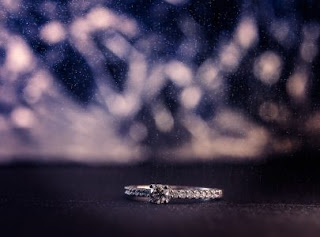MYTHS & FACTS ABOUT LAB GROWN DIAMONDS
Lab grown diamonds have gained massive popularity in recent years, emerging as the center stone of choice in engagement rings and other contemporary jewellery pieces for their environmental and social advantages over mined diamonds. However, there are still many misconceptions or myths about lab grown diamonds around these gems due to which certain consumers are leery of purchasing them. This article will separate fiction from the facts and bust all the myths surrounding lab grown diamonds once and for all.
Myth: Lab grown diamonds are fake, artificial or synthetic.
Fact: Lab grown diamonds are neither synthetic nor artificial. They are as real as mined diamonds and are grown by replicating the earth’s conditions in a laboratory instead of being mined from under the surface of the earth.
This has been validated by industry experts as below:
“They (lab grown diamonds) are real diamonds. They have the same optical, chemical, thermal and physical features.” – Matthew Hall, Vice President, GIA
Also, the GIA and the US Federal Trade Commission (US FTC) dropped the word “synthetic” in describing lab grown diamonds in their diamond reports and jewellery guidelines respectively.
Myth: Lab grown diamonds are inferior in quality as compared to mined diamonds
Fact: Lab grown diamonds are of the same quality, if not better than mined diamonds.There is no optical, thermal, physical or chemical composition difference between mined & lab grown diamonds. Yet, in the case of lab grown diamonds particularly CVD diamonds, consumers benefit from a better brilliance and shine as these diamonds are devoid of nitrogen impurities and composed entirely of carbon – classified & certified as the Type IIa diamond.
A Type IIA diamond in the mined counterpart is an extreme rarity as 98% of world’s mined diamonds have nitrogen impurity and are not the purest. In that case, a CVD diamond is in fact superior quality to its mined counterpart.
Myth: Lab grown diamonds diamonds are cheaper because they are of poor quality
Fact: Lab grown diamonds are created using advanced technology in laboratories whereas mined diamonds are mined from under the surface of the earth. Lab grown diamonds do not incur the expense of mining and hence pass on the cost-benefit to the consumers with lower pricing. Their quality is not inferior to that of mined diamonds.
Myth: Lab grown diamonds are not certified
Fact: Lab grown diamonds are certified by the same diamond grading & certifying agencies that grade & certify mined diamonds including world-renowned organisations such as GIA, IGI, and SGL.
Myth: Lab grown diamonds do not have resale value
Fact: Lab grown diamonds have resale value with brands like Limelight Diamonds offering buyback and exchange opportunities to the end consumers.
Myth: Lab grown diamonds change colour over time
Fact: No, lab grown diamonds are equivalent to mined diamonds in terms of their colour, optics, physical & thermal compositions. So they do not change colour over time and are as resilient as mined diamonds.
Myth: Lab grown diamonds impact the environment and our society in the same way as mined diamonds do
Fact: Lab grown diamonds are not mined diamonds. As a result, they do not bear the burden of mining and its associated environmental and social costs. 1 carat of a lab grown diamond can save up to 109 gallons of water and 250 tonnes of land. Today, in the world nearly 150 million carats of mined diamonds are consumed and one can only imagine the damage done each year!
They are also devoid of any ethical conflicts as they do not undergo an ambiguous supply chain or face any hazards owing to mining conditions.
Myth: You can tell the difference between lab grown diamonds and mined diamonds just by looking at them
Fact: No the naked eye cannot tell the difference between mined diamonds and lab grown diamonds. Specifically designed hi-tech machines in certification labs only can tell the difference between lab grown diamonds and mined diamonds.
Myth: Lab grown diamonds (Chemical Vapor Deposition) diamonds are the same as CZ (Cubic Zirconia) or Moissanite.
Fact: Diamond is entirely made of carbon. Diamonds crafted through the Lab grown diamond process is made up of 100% carbon and share the same chemical, optical, thermal properties as a mined diamond. Cubic Zirconia on the other hand is a diamond simulant, made up of Zirconium Oxide and does not share the same properties as a diamond. Moissanite is also a diamond simulant made up of silicon carbide.
Myth: All lab grown diamonds are CVD Diamonds
Fact: No, diamonds can be grown in the laboratory through two different processes currently: (1) Chemical Vapor Deposition (CVD) process (2) High-Pressure High Temperature (HPHT) process. Whilst CVD technology exactly replicates the diamond creation process that occurs below the surface of the earth, the HPHT process doesn’t fully replicate the diamond creation process that occurs below the earth. It begins with a mined diamond seed but then uses graphite and a molten metal influx as part of its diamond creation process. As a result of the metal influx, HPHT diamonds have metal impurities and are not 100% carbon composed. As a result, unlike CVD diamonds, they are not the purest diamonds and do not receive a classification of Type IIA by the diamond grading labs.
We hope the article helps debunk a lot of myths around lab grown diamonds. Feel free to get in touch, if you need to clarify any doubts about CVD diamonds or lab grown diamonds in general.

Comments
Post a Comment